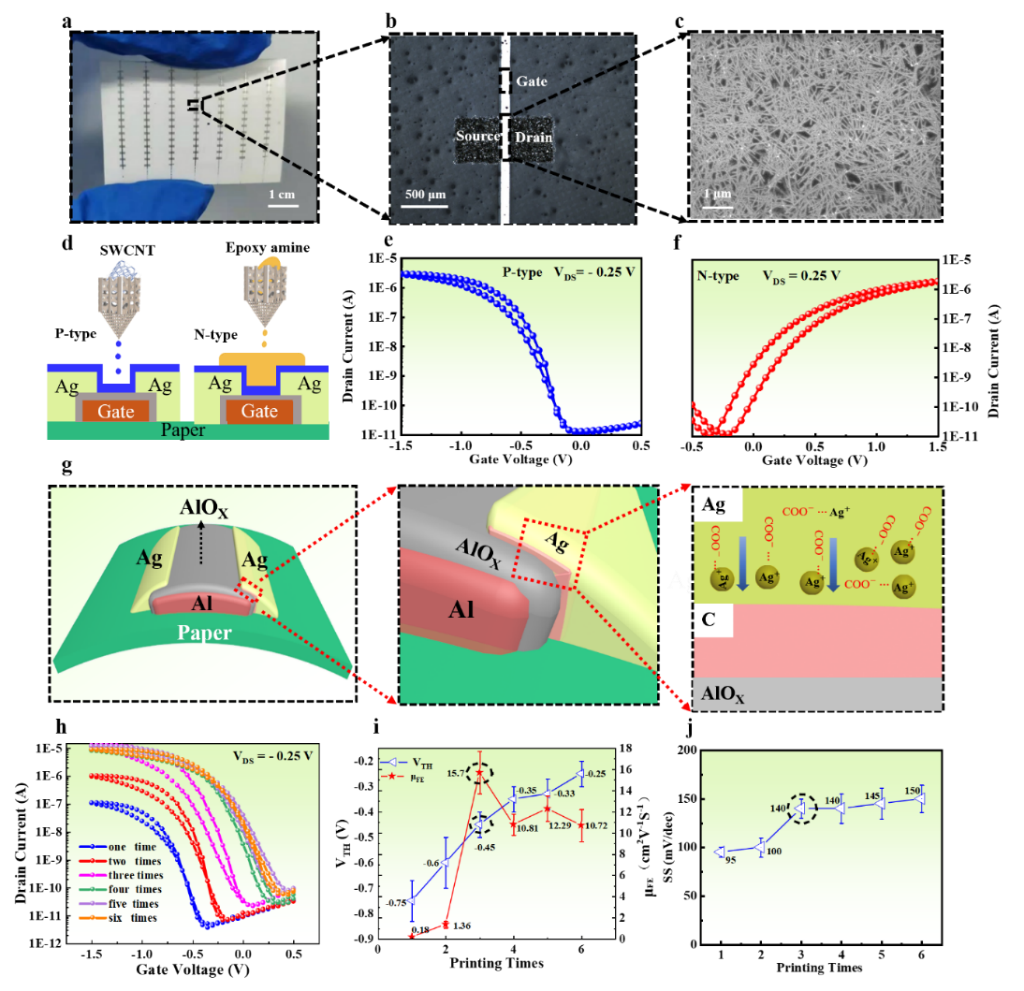Peking University, September 21, 2022: Influenced by popular incentives for creating light, functional, and power-efficient devices, paper-based electronics have grown in demand.
Compared to traditional devices, paper-based electronics are lightweight, recyclable, and biodegradable, promising technological innovations that promote environmental sustainability. Paper substrate irradiation is known to capture less charge, hold stronger resistance to radiation, while encouraging the creation of special application electronic devices. However, despite research significance, current paper-based electronics only have a single function, that is, to act as sensors or unipolar transistors. Low-power paper-based CMOS field-effect transistors with unitary gate circuits are still difficult to achieve.
Recently, a research team was jointly formed by Peking University and Suzhou Institute of Nanotechnology, led by Zhang Zhiyong and Zhao Jianwen’s research groups respectively.
Taking advantage of the carbon nanotube’s high switching ratio, chemical stability, mechanical strength and quasi-one-dimensional structure, the research team was able to fabricate carbon nanotube thin film transistors on paper substrates through screen printing and doping technology.
The team developed two important regulation techniques: First, converting pristine p-type transistors into n-type transistors by printing an epoxy-amine layer. Second, controlling the threshold and transconductance of the transistors by adjusting the number of prints delivered from the carbon nanotube films.
The constructed paper-based CMOS inverters can achieve operating voltage of as low as 0.2 V, power consumption of 0.0124 pW/μm and radiation-tolerance of 2 Mrad. This effectively demonstrates carbon nanotube material’s low power consumption and anti-irradiation properties, promoting further applications in low-power wearable IoT devices and deep space exploration.
Figure 1: Printed enhanced paper-based carbon nanotube transistors
Figure 2: Ultralow-power paper-based CMOS inverter and NAND circuit
Figure 3: Paper-based radiation-tolerant CMOS circuit
The related results were published in Advanced Materials entitled “Ultralow-power and radiation-tolerant complementary metal-oxide-semiconductor electronics utilizing enhancement-mode carbon nanotube transistors on paper substrates” on August 27, 2022.
Written by: Niki Qiu
Edited by: Meng Bin
Source: PKU News (Chinese)



